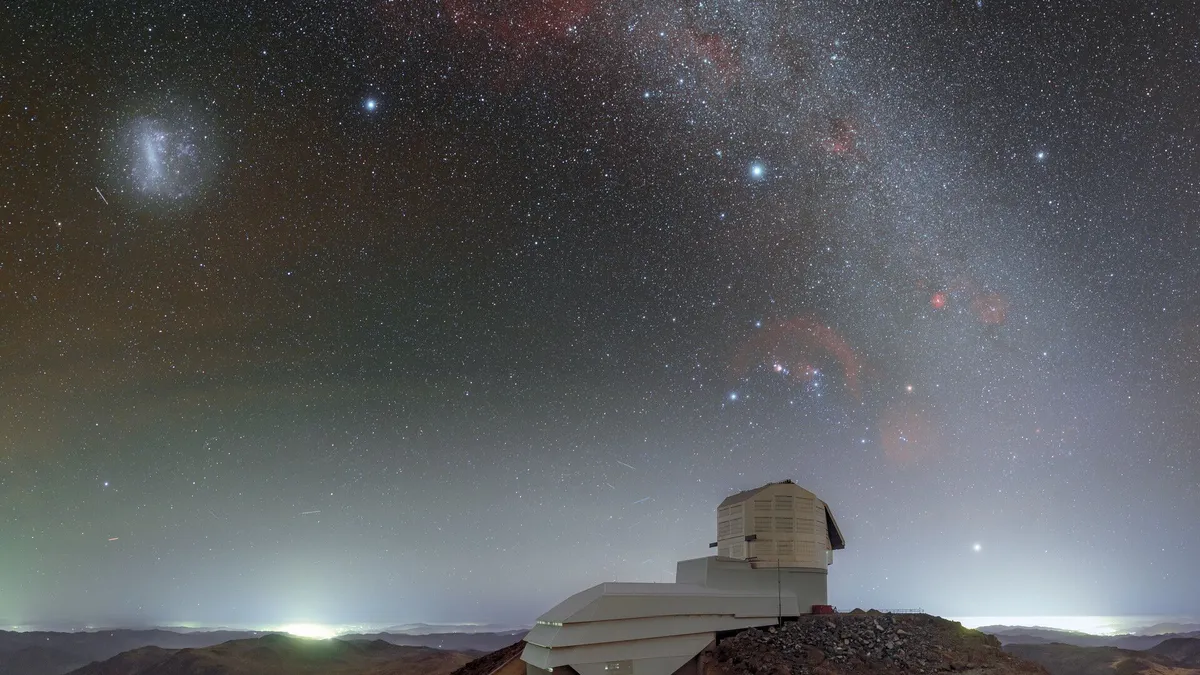
Named in honor of the groundbreaking astrophysicist Vera C. Rubin, who played a pivotal role in confirming the existence of dark matter, the Vera C. Rubin Observatory represents one of the most ambitious ground-based telescopes ever constructed. This state-of-the-art observatory is on a mission to conduct a comprehensive survey of the entire southern sky every three nights, utilizing its impressive 8.4-meter Simonyi Survey Telescope and the revolutionary 3.2 gigapixel LSST Camera, which holds the title for the largest digital camera in the world.
This awe-inspiring image showcases the Rubin Observatory set against the breathtaking backdrop of the southern Milky Way Galaxy, with the Large Magellanic Cloud softly illuminating the left side of the frame. The sweeping arc of the Milky Way above reflects the expansive field of view that the observatory will soon explore in remarkable detail, night after night. This ambitious endeavor aims to create the most comprehensive record of the evolving night sky ever attempted.
The Rubin Observatory is strategically positioned at the summit of Cerro Pachón in the majestic Chilean Andes. This prime location provides an optimal vantage point for observing celestial phenomena and enhances the observatory's ability to conduct its expansive surveys.
Now that the observatory is fully operational, it is embarking on a groundbreaking 10-year-long survey known as the Legacy Survey of Space and Time (LSST). This extensive survey will meticulously record the positions, brightness, and motions of billions of celestial objects. The sheer volume of data generated will be unprecedented, requiring astronomers at the observatory to utilize an innovative electronic 'data butler' to efficiently manage and analyze the telescope's images.
With its powerful camera, the Rubin Observatory is set to detect up to 10 million transient changes in the sky each night, capturing everything from asteroids to supernovae. This capability will significantly enhance our understanding of the universe and its ever-changing nature.
The Vera C. Rubin Observatory is not just a technological marvel; it is a gateway to understanding the cosmos at an unprecedented scale. To dive deeper into the exciting developments and discoveries that will emerge from this observatory, stay tuned for more information and updates.